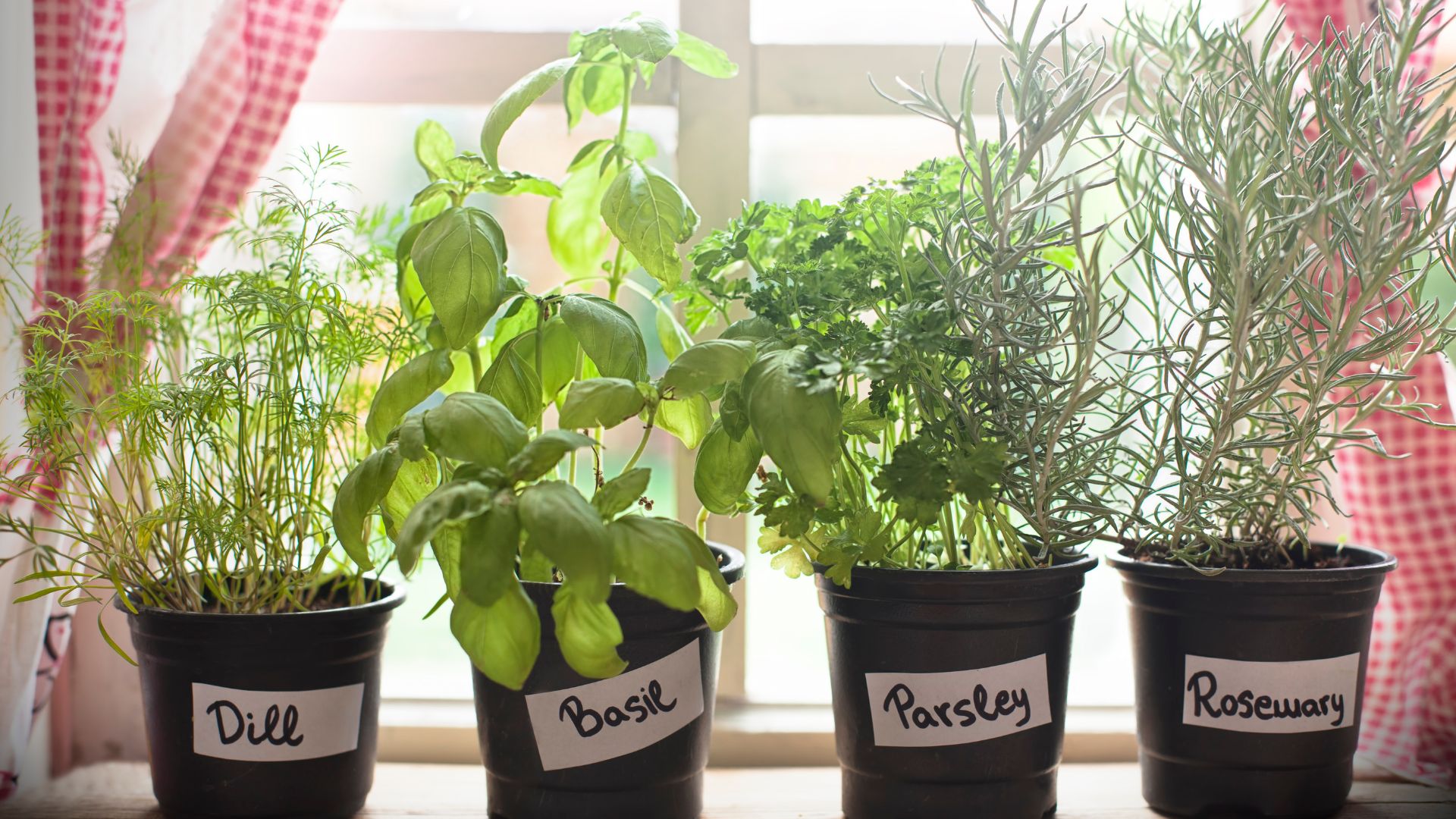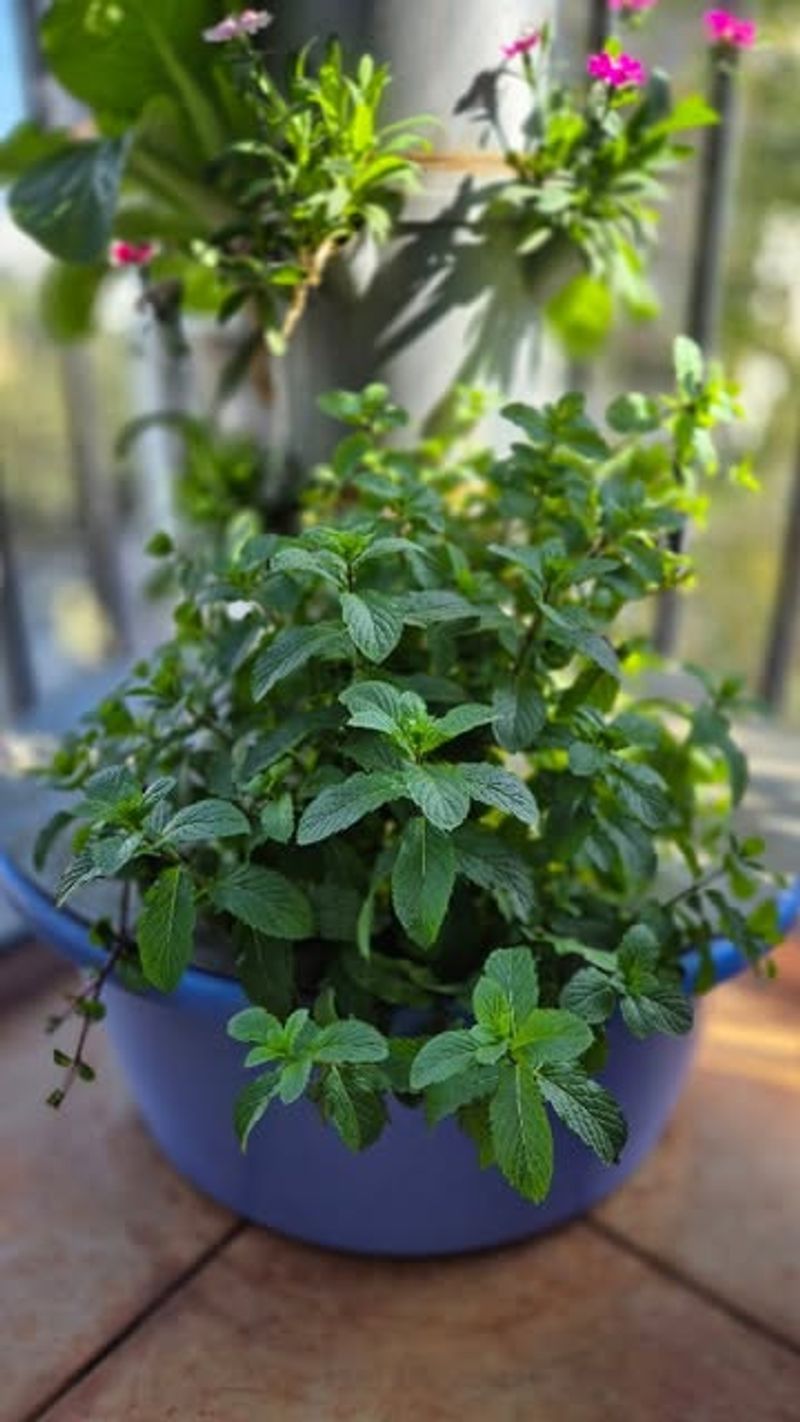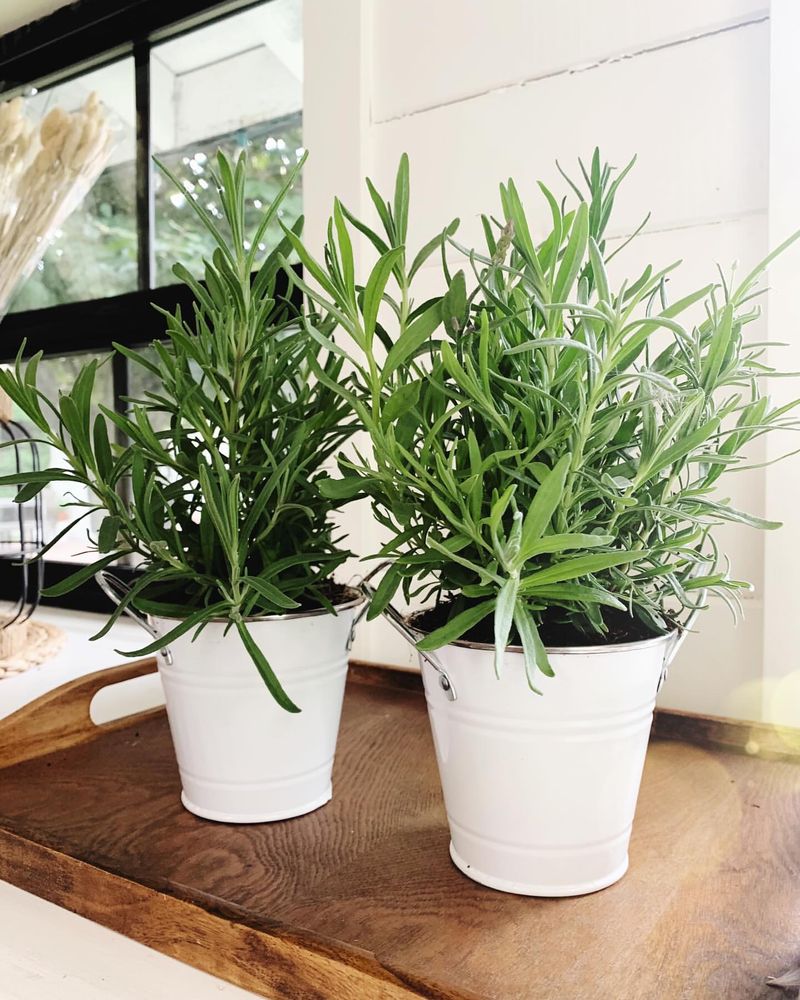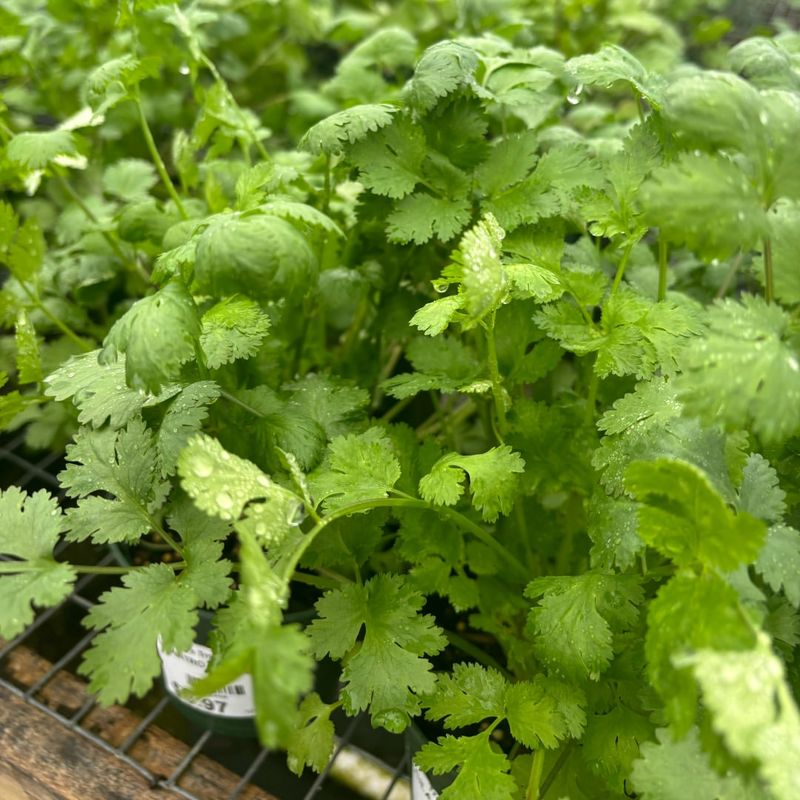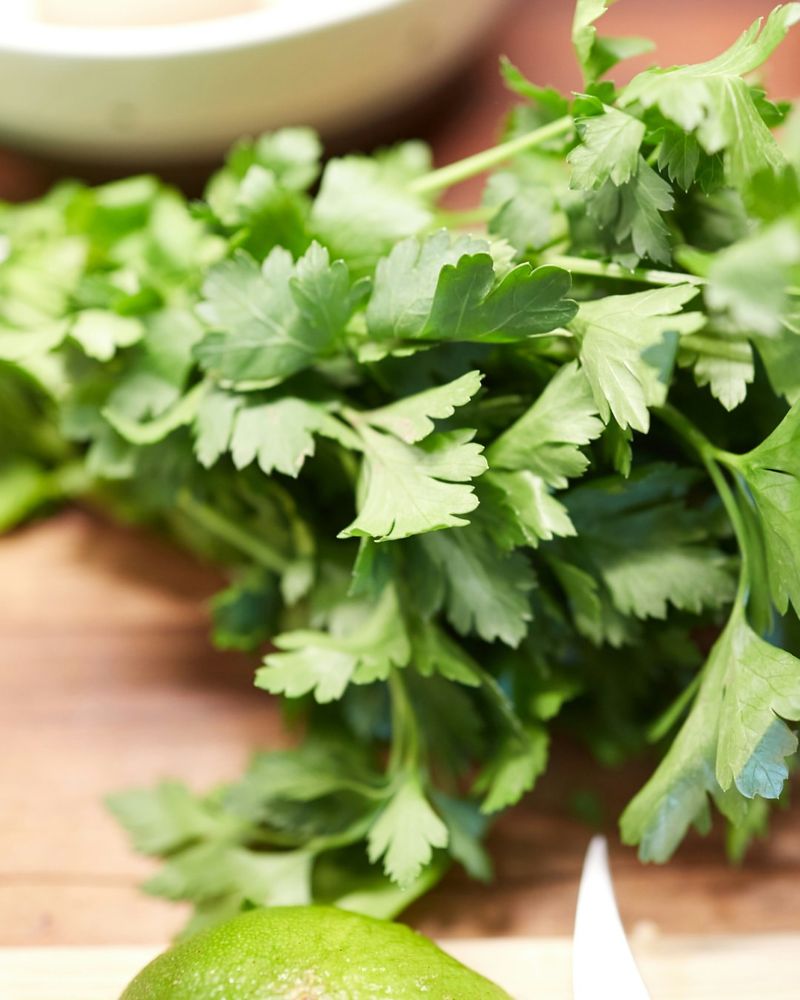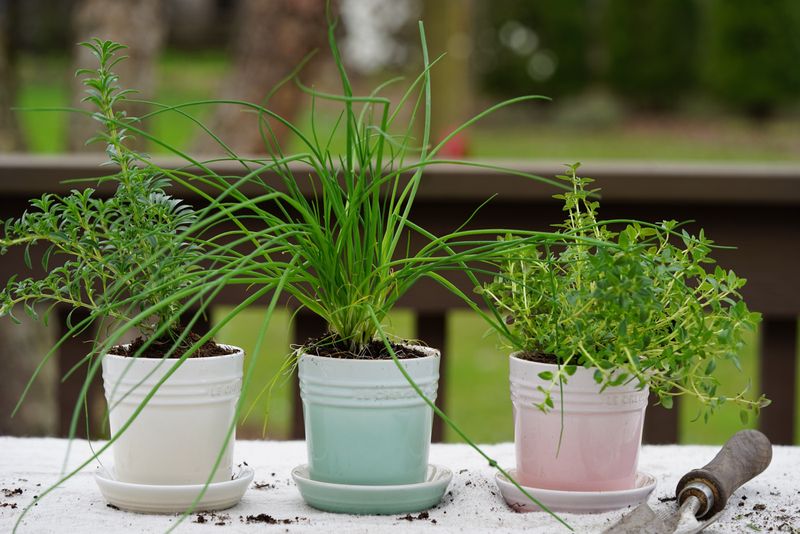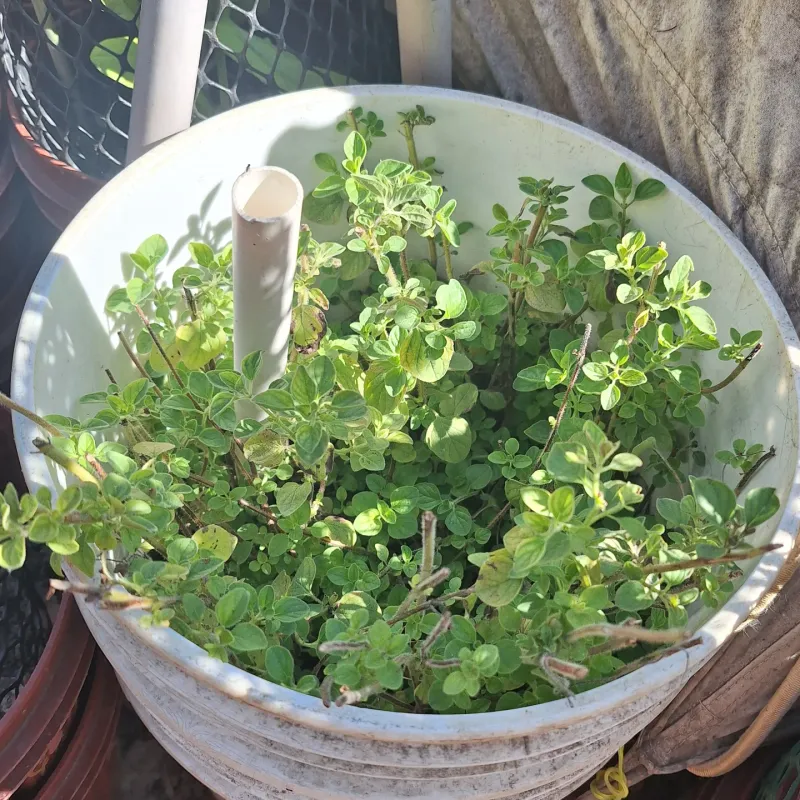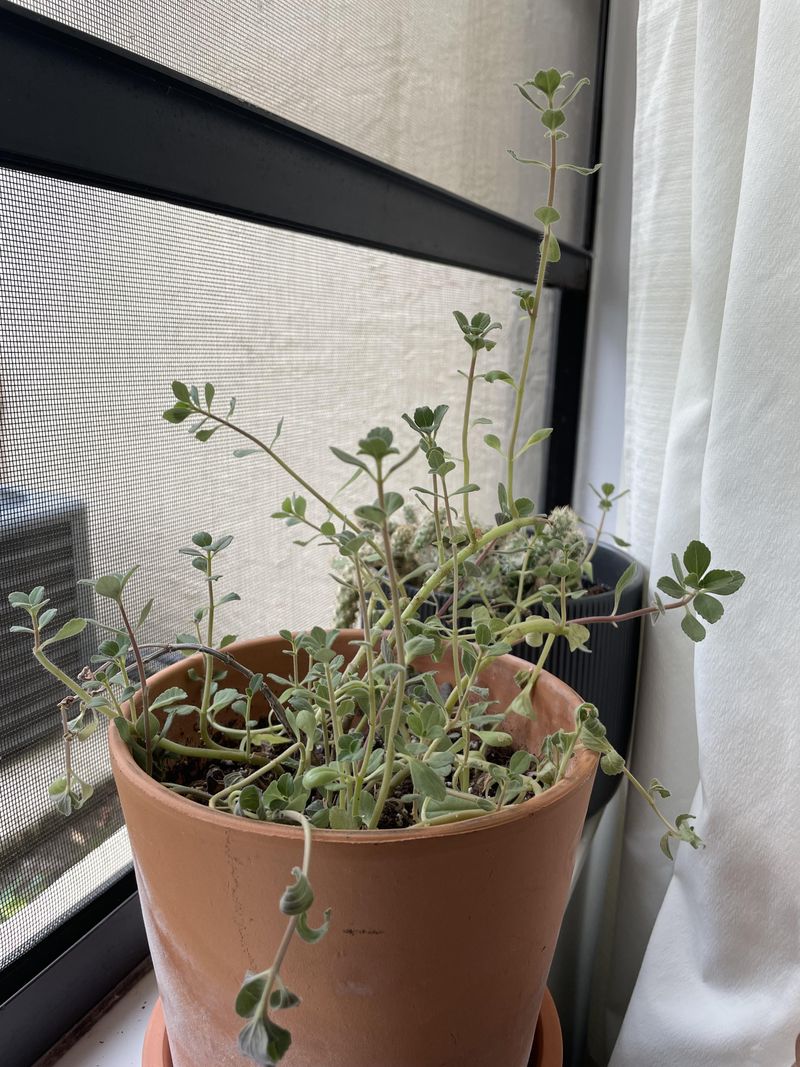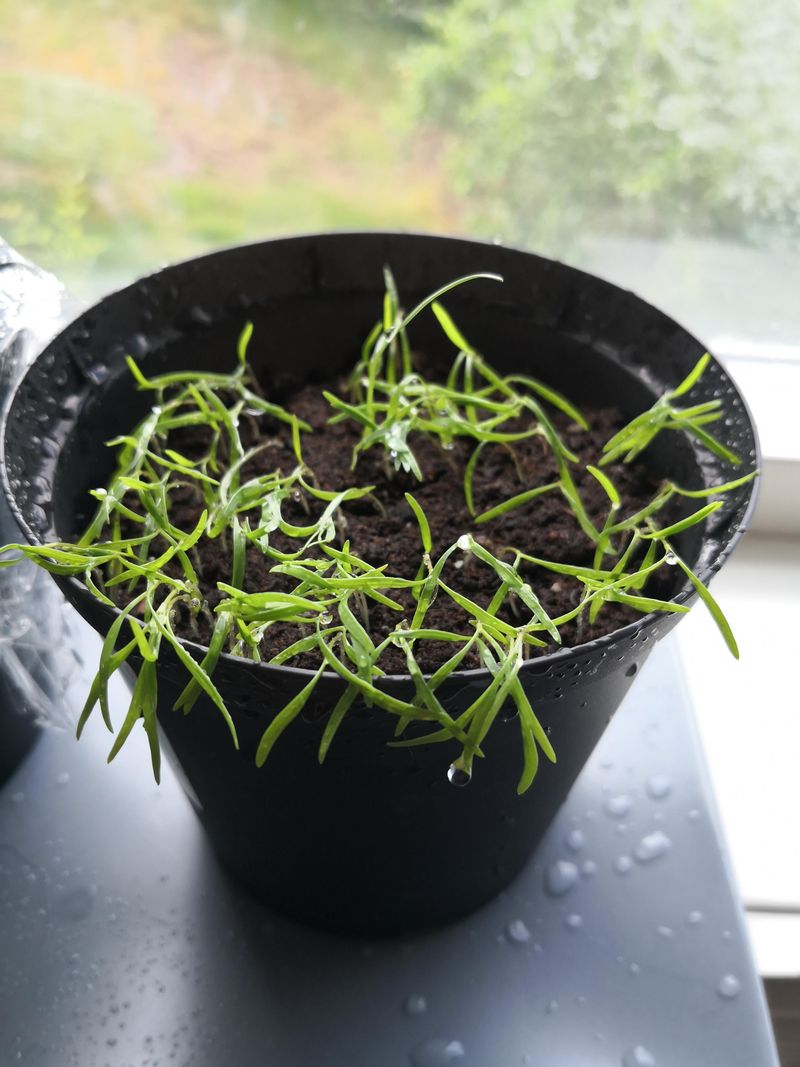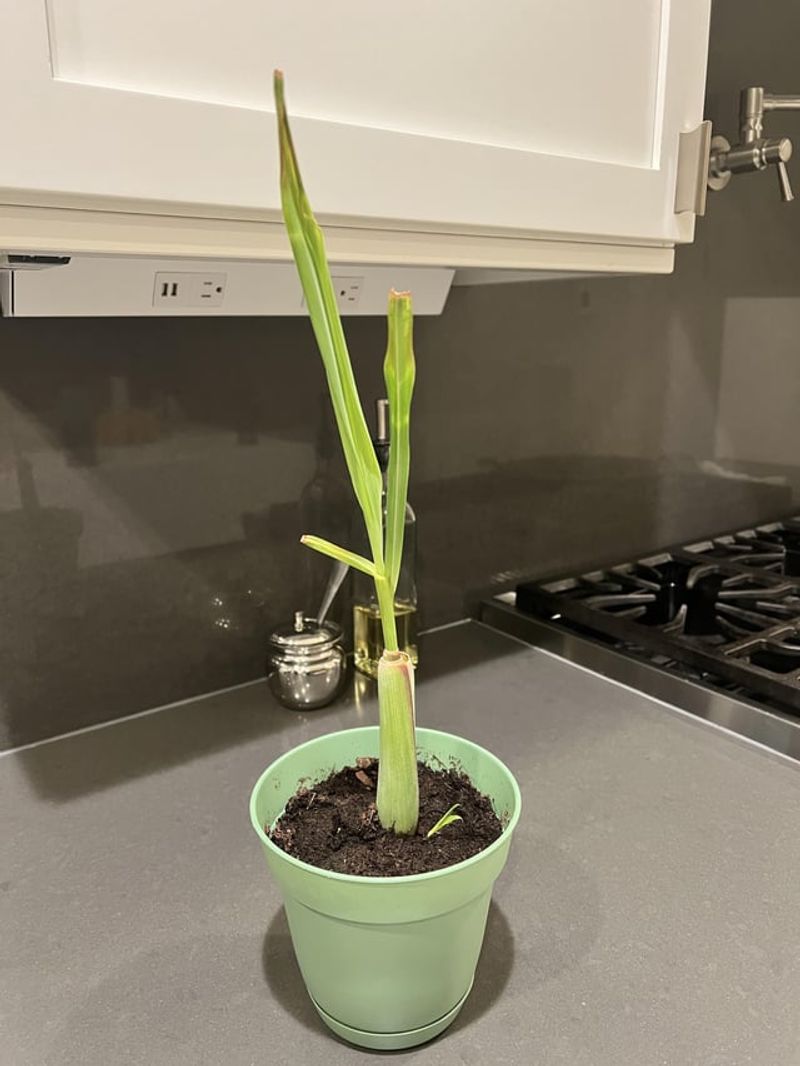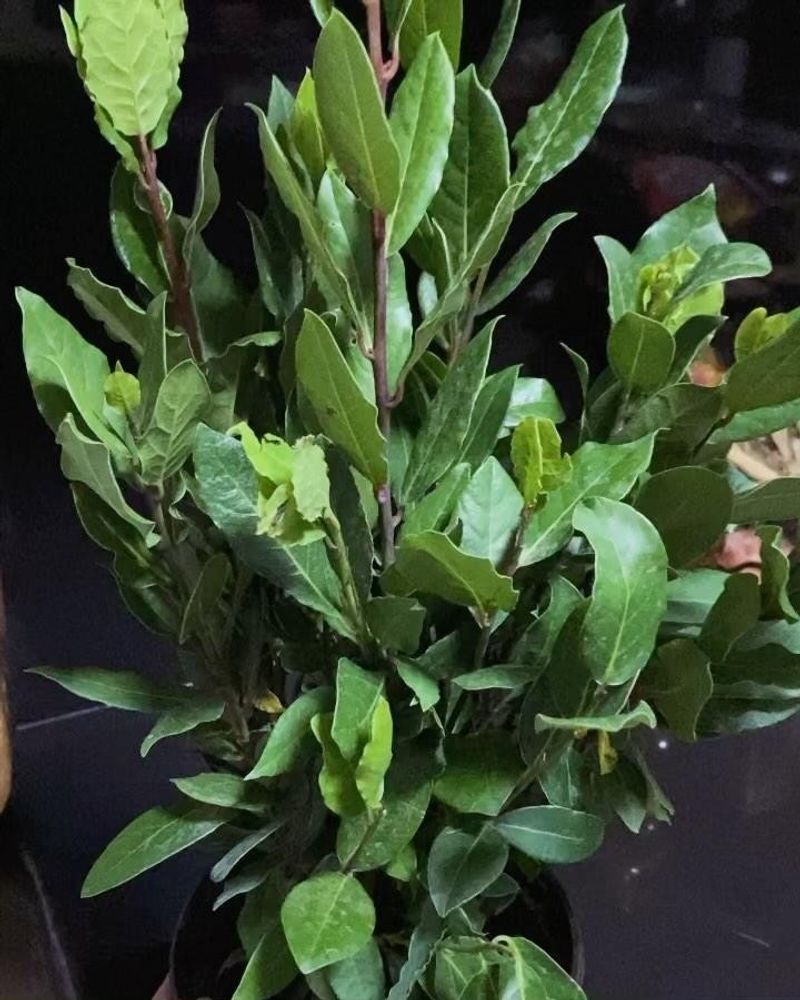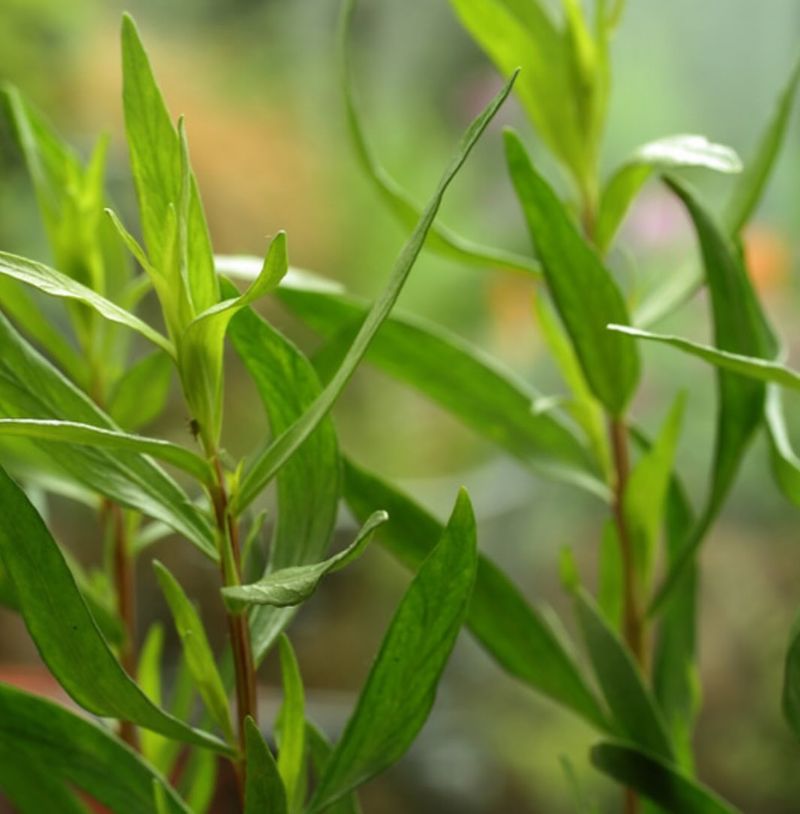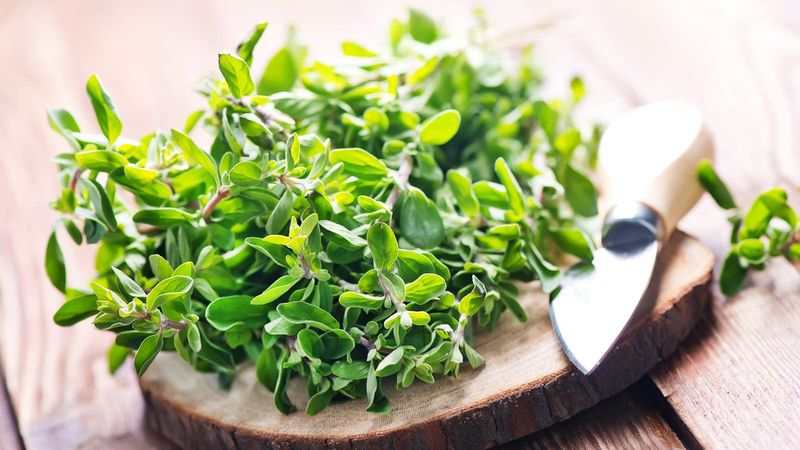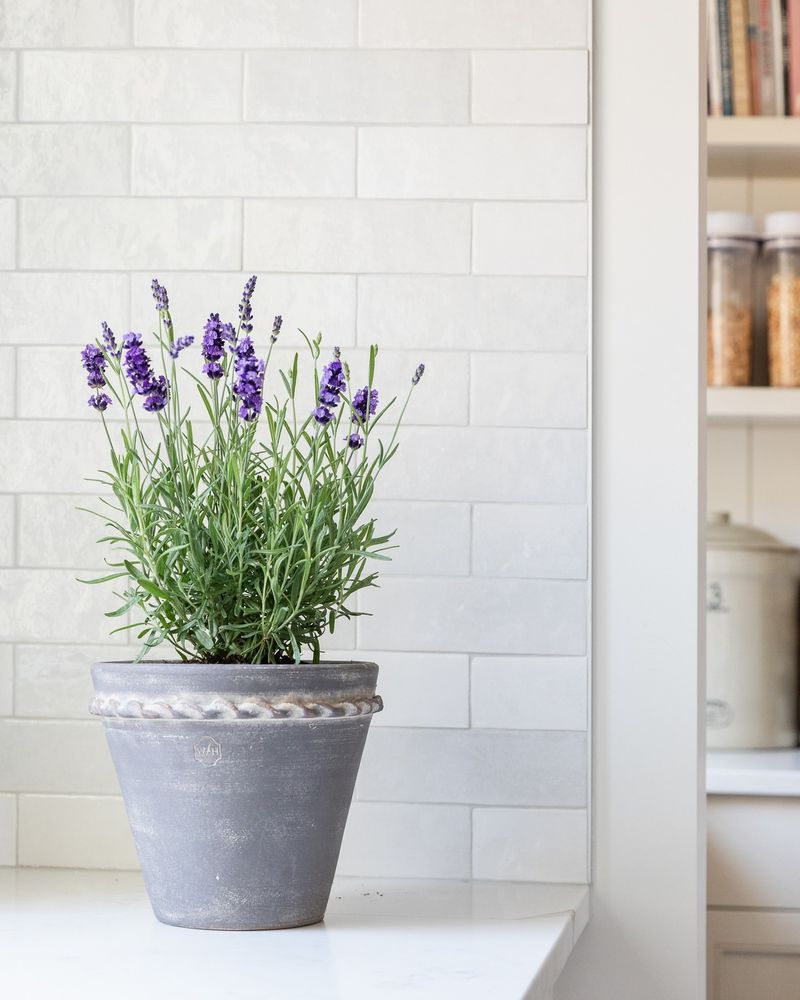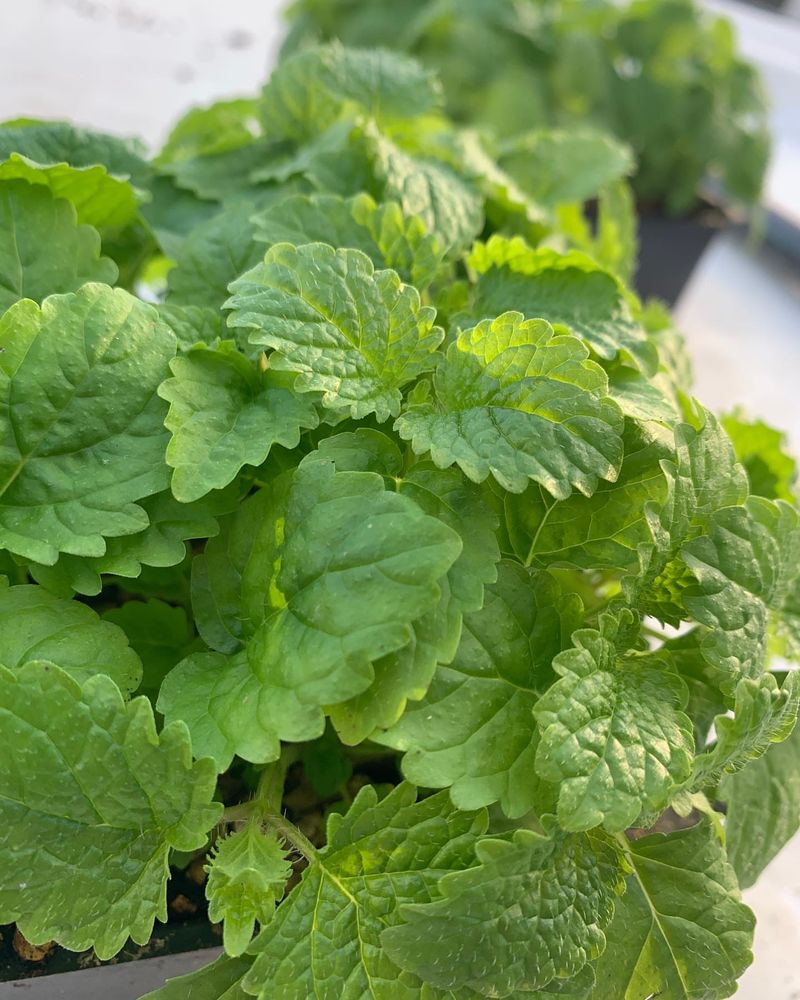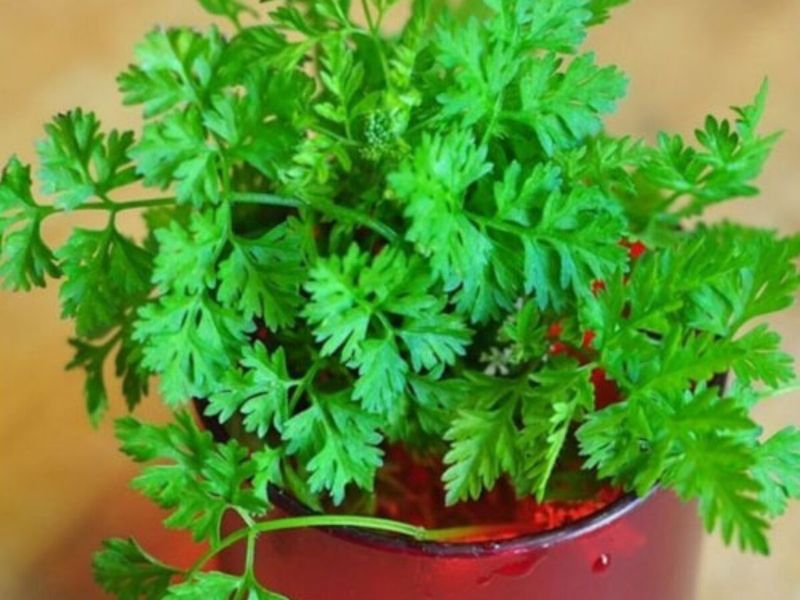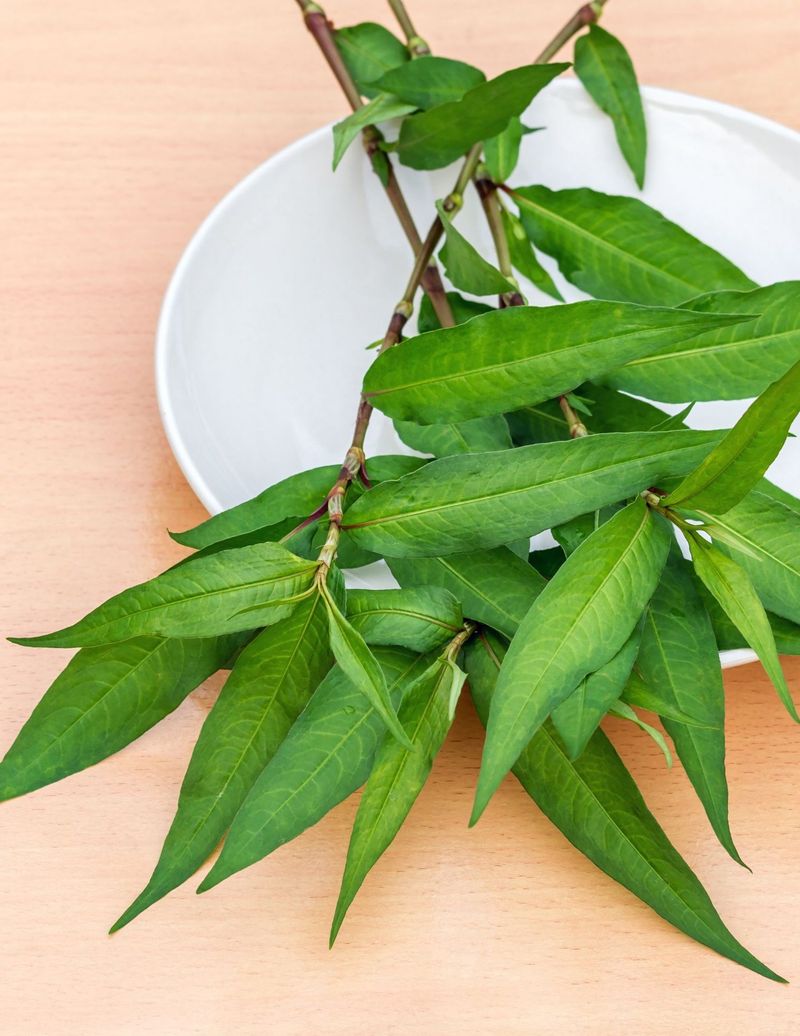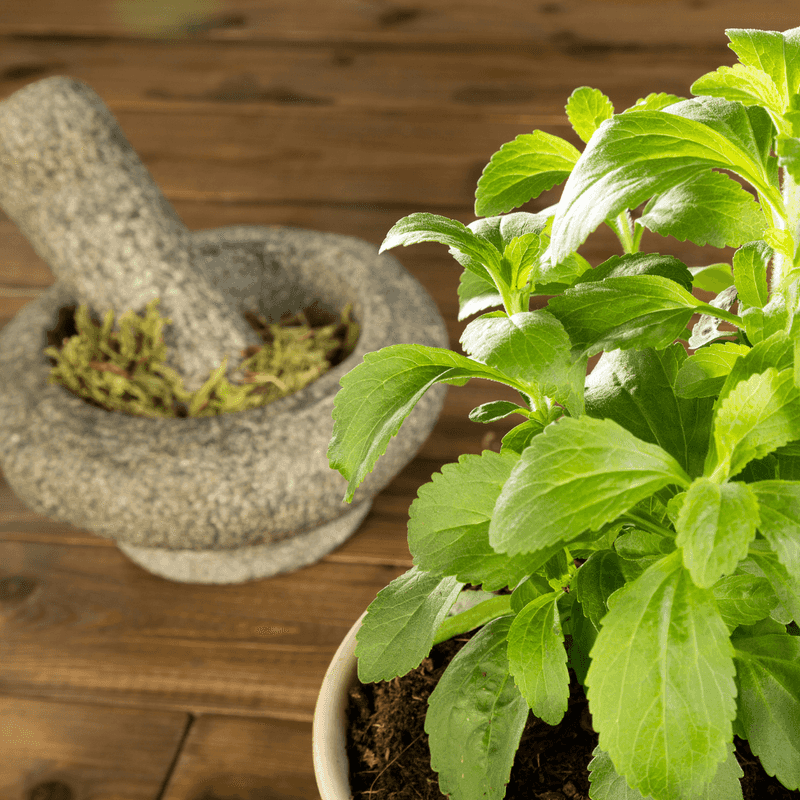Growing herbs at home is a simple joy that blends flavor, freshness, and a touch of greenery. With just a sunny windowsill or a cozy kitchen nook, you can grow your own culinary staples. It’s gardening scaled perfectly for everyday life.
These herbs aren’t fussy—they thrive with a bit of sunlight and regular watering. From fragrant basil to earthy thyme, each plant adds something special to your meals. And skipping the store shelf saves money while boosting taste.
More than just ingredients, your herb garden becomes part of your kitchen’s personality. It brings beauty and scent to your space, while encouraging a hands-on connection to the food you love.
1. Basil: The Italian Kitchen Essential
Basil thrives in warm spots with plenty of sunlight, making it perfect for a sunny kitchen windowsill. The aromatic leaves add a sweet, peppery flavor to countless dishes.
Water basil only when the soil feels dry to the touch. Regular harvesting encourages bushier growth – simply pinch off leaves from the top when needed for your recipes.
In my experience, keeping basil away from cold drafts dramatically improves its longevity. This herb comes in many varieties beyond sweet basil, including purple, lemon, and Thai basil.
2. Mint: The Refreshing Powerhouse
Mint grows with remarkable vigor, often taking over spaces if not contained. Always plant mint in its own pot to prevent it from overwhelming other herbs in your collection.
The cooling flavor brightens up summer drinks, desserts, and savory dishes alike. For the best taste, harvest leaves in the morning when essential oils are strongest.
This hardy herb thrives even with minimal attention, making it ideal for beginning gardeners. One year, I tried growing three varieties side by side – spearmint, peppermint, and chocolate mint – each offering distinctly different flavors.
3. Rosemary: The Aromatic Evergreen
Woody and pine-scented, rosemary brings Mediterranean flavor to roasted meats, potatoes, and bread. This herb grows as a small shrub and can live for years with proper care.
The key to healthy rosemary is well-draining soil and avoiding overwatering. Allow the soil to dry out between waterings to prevent root rot, which can quickly kill this drought-tolerant plant.
For me, the trick was placing rosemary in my brightest window and misting occasionally to increase humidity. Trim stems as needed for cooking, which also helps maintain a compact, bushy shape.
4. Thyme: The Versatile Low-Maintenance Herb
Thyme’s tiny leaves pack a powerful flavor that enhances soups, stews, and meat dishes. This compact herb grows slowly but steadily, forming a small bush that fits perfectly on crowded windowsills.
Growing thyme indoors requires minimal effort – it thrives in average light and prefers drier conditions. The woody stems hold up well to long cooking times, making it perfect for slow-cooked dishes.
I’ve found that thyme is remarkably forgiving if you forget to water it occasionally. Available in several varieties including lemon thyme, this herb adds complexity to dishes without overwhelming other flavors.
5. Cilantro: The Love-It-Or-Hate-It Herb
Cilantro delivers bright, citrusy flavor to Mexican, Indian, and Asian dishes. This fast-growing herb goes from seed to harvest in just a few weeks, providing fresh leaves for your cooking adventures.
Unlike many herbs, cilantro prefers cooler temperatures and partial shade. Successive planting every few weeks ensures a continuous supply, as individual plants complete their lifecycle relatively quickly.
If you’re like me, you’ll appreciate cilantro’s dual purpose – the leaves are cilantro, while the seeds are the spice known as coriander. Harvest outer leaves first, allowing the center to continue growing for multiple harvests.
6. Parsley: The Nutritional Powerhouse
Parsley offers more than just garnish potential – it’s packed with vitamins and adds fresh flavor to countless dishes. Choose between curly parsley (more decorative) or flat-leaf Italian parsley (often preferred for cooking).
This biennial herb grows slowly at first but becomes quite productive once established. Harvest outer stems by cutting close to the base, which encourages new growth from the center.
In my garden, parsley has been surprisingly cold-tolerant, continuing to produce even as temperatures drop. The deep green leaves maintain their color and flavor even after light cooking, making them perfect for finishing dishes.
7. Chives: The Mild Onion Alternative
Chives grow in grassy clumps, offering a mild onion flavor that enhances eggs, potatoes, and soups. Their slender green stalks can be snipped with scissors as needed, growing back quickly after harvesting.
The purple pom-pom flowers that appear in spring aren’t just decorative – they’re edible too! Sprinkle these delicate blossoms on salads for a pop of color and subtle onion flavor.
I’ve discovered that chives are remarkably resilient, bouncing back even after severe cutting. This perennial herb will continue producing for years, making it one of the most economical additions to your kitchen garden.
8. Oregano: The Pizza Garden Star
Oregano’s bold, slightly spicy flavor is essential for Italian and Greek cooking. The small, oval leaves grow on trailing stems that cascade beautifully over the sides of containers.
This Mediterranean native thrives in sunny spots and tolerates occasional drying out. The flavor intensifies when the herb is grown in slightly poor soil with minimal fertilizer – too much feeding results in less flavorful leaves.
For me, oregano has been the easiest herb to grow year after year. Harvest sprigs just before flowering for the strongest flavor, then hang them to dry for winter use when fresh herbs are less available.
9. Sage: The Savory Thanksgiving Favorite
Sage’s velvety, gray-green leaves bring earthy flavor to poultry, stuffing, and pasta dishes. This woody perennial develops beautiful texture and complexity as it matures in your kitchen garden.
Unlike many herbs, sage leaves actually taste better when lightly cooked, which releases their essential oils. The plant grows slowly but steadily, eventually forming a small shrub that produces for years.
One year, I tried frying sage leaves in butter until crisp – they transformed into delicious, savory chips that elevated a simple pasta dish. This drought-tolerant herb needs excellent drainage and moderate watering to prevent root problems.
10. Dill: The Pickle Garden Essential
Dill’s feathery foliage and distinctive flavor make it perfect for fish dishes, potatoes, and of course, homemade pickles. The tall, airy structure adds visual interest to your herb collection.
Growing dill indoors requires a deeper pot to accommodate its taproot. The plant completes its lifecycle quickly, so consider succession planting every few weeks for a continuous supply of fresh fronds.
I’ve noticed that dill attracts beneficial insects when grown outdoors, making it a companion plant worth considering for balcony gardens. Both the leaves (dill weed) and seeds are useful in cooking, offering slightly different flavor profiles.
11. Lemongrass: The Tropical Flavor Enhancer
Lemongrass brings citrusy brightness to Asian curries, soups, and teas without the acidity of actual lemons. The long, grassy stalks grow from a bulbous base that multiplies over time.
Starting lemongrass is surprisingly easy – simply place store-bought stalks in water until roots form, then transfer to soil. The plant grows quickly in warm conditions and bright light, forming an attractive grassy clump.
In my experience, lemongrass thrives when given plenty of water during the growing season. Harvest outer stalks by cutting at the base, leaving the center to continue producing new growth throughout the season.
12. Bay Laurel: The Long-Lasting Leaf
Bay leaves impart subtle depth to soups, stews, and sauces during long cooking. Unlike most kitchen herbs, bay laurel grows as a small tree that can live for decades with proper care.
The glossy, dark green leaves are used whole and removed before serving. While slow-growing, bay laurel eventually needs a larger pot and occasional pruning to maintain a manageable size in kitchen settings.
For me, the joy of growing bay laurel comes from its longevity – my plant has provided fresh leaves for over five years. This herb tolerates lower light conditions than many others, making it suitable for kitchens without direct sunlight.
13. Tarragon: The French Cuisine Classic
Tarragon’s distinctive anise-like flavor pairs beautifully with chicken, eggs, and creamy sauces. The slender leaves grow on upright stems that reach toward light sources.
For indoor growing, choose French tarragon (the most flavorful variety) rather than Russian tarragon. This perennial herb prefers moderate watering and good air circulation to prevent powdery mildew issues.
I’ve found that tarragon benefits from occasional trimming to encourage bushier growth. The delicate flavor diminishes with cooking, so add this herb near the end of preparation or use it in cold dishes to preserve its distinctive taste.
14. Marjoram: The Gentle Oregano Cousin
Marjoram offers a delicate, floral sweetness that’s milder than its relative oregano. The small, slightly fuzzy leaves grow on stems that become woody with age, forming a compact bush perfect for container growing.
This tender perennial prefers consistent moisture and bright, indirect light. Harvest leaves before flowering for the best flavor, pinching stems to encourage branching and fuller growth.
In my herb garden, marjoram has proven itself worthy of space for its ability to enhance vegetables and egg dishes without overwhelming them. The subtle flavor makes it especially suitable for dishes where you want herbs to complement rather than dominate.
15. Lavender: The Aromatic Multitasker
Lavender brings floral notes to baked goods, herbal teas, and savory dishes when used sparingly. The silver-green foliage and purple flower spikes add ornamental value to your herb collection.
Growing lavender indoors requires excellent drainage, minimal watering, and the brightest possible light. Choose compact varieties like ‘Munstead’ or ‘Hidcote’ that adapt better to container life than larger types.
I’ve discovered that lavender benefits from occasional feeding with a low-nitrogen fertilizer to encourage flowering. This versatile herb can be used fresh or dried, with the flowers offering stronger fragrance than the leaves.
16. Lemon Balm: The Calming Citrus Herb
Lemon balm’s bright citrus scent refreshes summer drinks, fruit salads, and herbal teas. The crinkled, heart-shaped leaves grow quickly, creating a bushy plant that fits nicely on a kitchen counter.
This member of the mint family shares its cousin’s vigor but with a gentler growth habit. Regular harvesting keeps the plant compact and prevents flowering, which can diminish flavor intensity.
If you’re like me, you’ll appreciate lemon balm’s stress-reducing properties as much as its culinary uses. A natural mosquito repellent, this herb serves double duty when grown near kitchen windows or doors during summer months.
17. Chervil: The Delicate French Herb
Chervil’s lacy leaves offer a subtle anise flavor that elevates egg dishes, fish, and spring vegetables. This delicate annual resembles parsley but with finer foliage and a more refined taste.
Growing chervil indoors requires cool temperatures and consistent moisture. The shallow roots prefer wider, rather than deeper pots, and the plant benefits from bright, indirect light rather than harsh direct sun.
I’ve found chervil to be one of the more challenging herbs to maintain year-round, but worth the effort for its unique flavor. This herb loses its delicate character when dried or cooked for long periods, so add it at the last minute.
18. Vietnamese Coriander: The Heat-Loving Alternative
Vietnamese coriander delivers cilantro-like flavor without the tendency to bolt in warm weather. The pointed leaves with distinctive purple markings grow on stems that spread horizontally, creating a full plant.
This tropical perennial thrives in warm, humid conditions and consistent moisture. The spicy, slightly peppery taste makes it perfect for Southeast Asian dishes, particularly those from Vietnam and Thailand.
In my kitchen garden, Vietnamese coriander has outperformed regular cilantro during summer months. The leaves maintain their flavor intensity even after light cooking, unlike many delicate herbs that lose character with heat.
19. Stevia: The Natural Sweetener
Stevia leaves provide calorie-free sweetness for beverages and light desserts. This bushy plant with serrated leaves grows readily in containers, providing a natural alternative to processed sweeteners.
Growing conditions for stevia mirror those of basil – warm temperatures, bright light, and moderate watering. Harvest leaves when they taste sweetest, typically just before flowering, then use them fresh or dried.
One year, I tried making stevia extract by steeping the leaves in vodka – it became a useful sugar substitute in my kitchen. The sweetness intensifies with drying, making this herb a valuable addition for health-conscious cooks.

